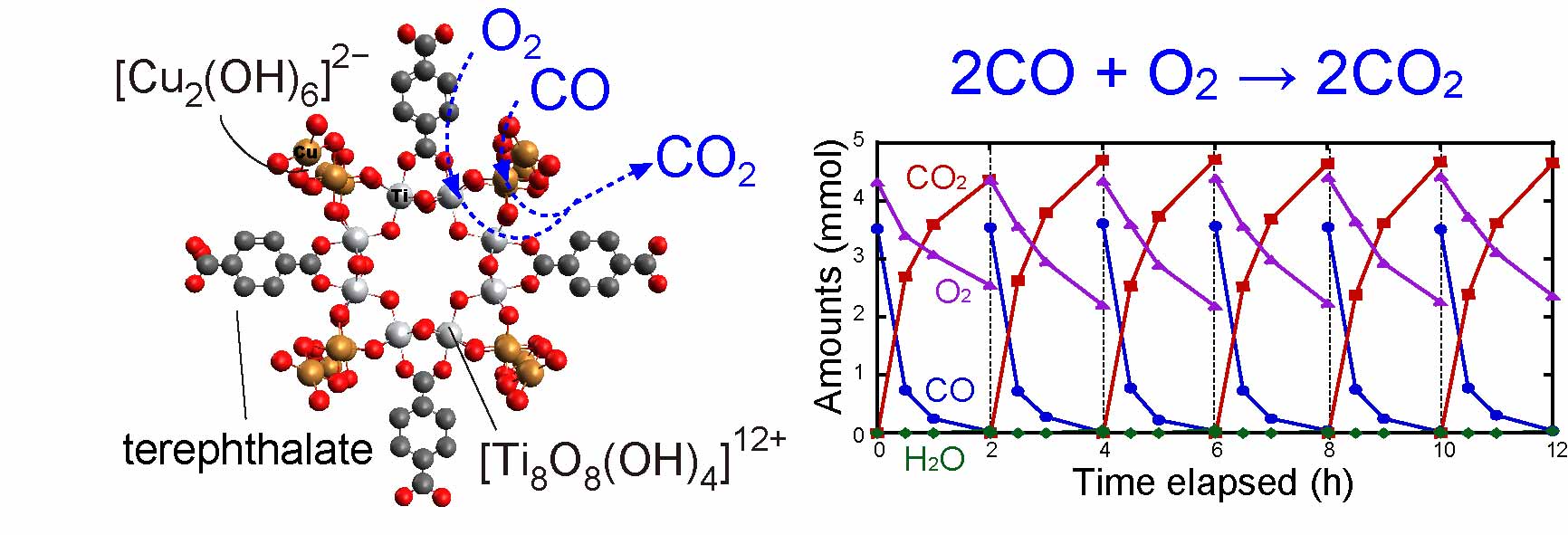|
Binary metal (Ti, Cu) oxyhydroxy–organic (terephthalate) framework: an interface model nanocatalyst for hydrogen purification
|
Yusuke Yoshida and Yasuo Izumi
Journal of Catalysis, 332, 1-12 (2015). DOI: 10.1016/j.jcat.2015.09.007![]() [The
PDF file]
[The
PDF file]
The importance of metal–support interfaces is widely known in commercial and fundamental heterogeneous catalysis, however, it is difficult to characterize the active interface sites. In this study, we synthesize a new class of compound comprising tetragonal [Ti8O8(OH)4]12+ clusters interlinked by terephthalates (bdc) and [Cu2(OH)6]2− linkers {Ti8O8(OH)4·(bdc)2·[Cu2(OH)6]4}. The crystalline structure was refined for X-ray diffraction and direct links between [Cu2(OH)6]2− and [Ti8O8(OH)4]12+ are confirmed by extended X-ray absorption fine structure. This compound functions very well (k = 0.117 min−1 in CO 63 Pa + O2 76 Pa at 323 K) as a catalytic model of interface Cu sites on ultra-dispersed Ti [hydro]oxide for preferential oxidation of CO in predominantly H2 gas, that is important for the purification of hydrogen used in fuel cells. In comparison, mean 1.7-nm CuO nanoparticles embedded inside the pores of MIL125 were inert (k = 0.0035 min−1) because of the absence of links between Cu and [Ti8O8(OH)4]12+ clusters. In CO 0.51 kPa + O2 0.51 kPa at 323 K, the conversion to CO2 and CO PROX selectivity using Ti8O8(OH)4·(bdc)2·[Cu2(OH)6]4 (76% and 99%) was significantly higher than that using CuO/CeO2 (28% and 96%, respectively) for 24 h.

Chiba University > Graduate School of Science > Department of Chemistry > Dr. Yasuo Izumi Group